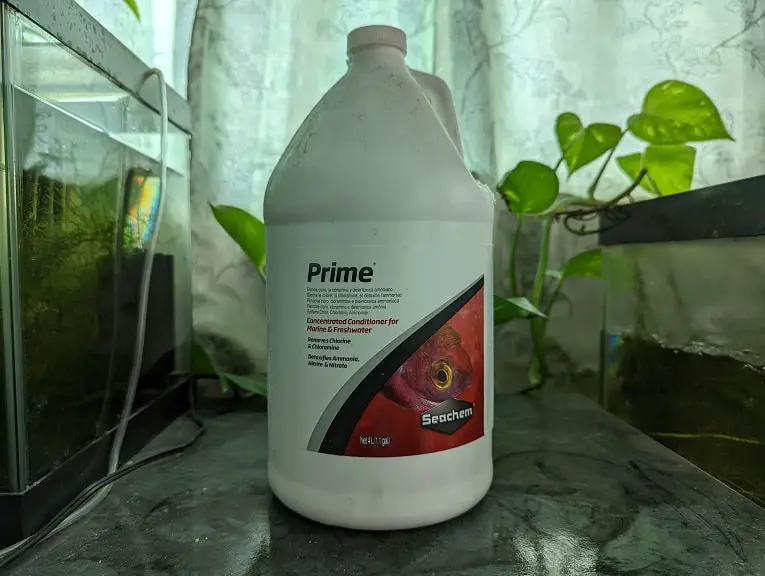Although Seachem Stability will help improve the biological filtration on your fish tank, adding way too much of the product may cause minor issues.
You can check out this guide from Aquarium Blueprints to see what can be done if you overdose Stability.
What are the official Seachem Stability dosage directions?
According to Seachem, the correct dosage for Stability should be 5 milliliters for every 10 gallons or 40 liters in your fish tank for the first dose if you are trying to cycle a fish tank. Subsequent dosages should be halved as you should only dose 2.5 milliliters for every 10 gallons or 40 liters.
The cap that comes with the Stability bottle measures at 5 milliliters. So, you can use that as a measuring cup when dosing.
Before adding Stability, make sure you shake the bottle. You will also need to turn off any UV and ozone equipment and leave them off for at least a day. If you are doing water changes, you should also use a dechlorinator like Seachem Prime to remove chlorine and chloramine.

What happens when you overdose Seachem Stability?
Seachem Stability is made of spore that will become active, producing beneficial bacteria colonies that will consume ammonia, nitrites and nitrates in your tank.
So, even when you moderately overdosed this product, you are really doing nothing more than just adding more beneficial bacteria into your tank.
In cases of extreme overdose, you water may get cloudy due to a bacteria bloom. This is perfectly safe for you fish and other aquatic pets. After sometime, the water should clear up on its own.
A major overdose may also deplete the oxygen level in your tank. So, if you see your fish and other aquatic pets hanging out at the top of the water more frequently than usual, then you might want to take action as your tank water may not have sufficient oxygen.
How to fix a fish tank that has been overdosed with Seachem Stability
As we stated above, cloudy water will eventually go away. When it comes to the depleted oxygen, you can try taking the following actions:
1. Increase the surface agitation of your aquarium. Doing so will promote gas exchange, which will add more oxygen in your waters.
To increase surface agitation, you can increase the follow on your filter. You can also move the outtake of your filter to near or above the water line to move the water more at the top. If you are using a bubble stone, you can also try increasing its air flow.
2. Lower the temperature of your fish tank. Hotter temperature leads to lower oxygen.
When lowering the temperature, make sure you don’t go below the recommend temperature range for your fish and other aquatic species in your aquarium.
3. One last action you can take is to perform a partial water change. With this process, you will be removing some of the Seachem Stability bacteria from the water column in your fish tank, which will leave more oxygen for your fish and other aquatic pets. A water change will also help clear out the cloudy water if you have a bacteria bloom as well.
When doing a water change, we recommend swapping out no more than 20% of your tank water. This is because some fish species get stressed out and sick with wild swings to water parameters. For even more sensitive pets, such as shrimps, we recommend doing no more than 10% at a time.
When putting water back in, make sure you use a dechlorinator like Seachem Prime to remove chlorine and chloramine. Otherwise, these compounds will kill off your beneficial bacteria, disrupting the biological cycle as well as potentially causing spikes to ammonia, nitrites and nitrates.
To see how you can use Stability with Prime, you can take a look at our tutorial.
After doing a water change, we recommend keeping an eye of your aquatic pets. If you still see them hanging out on top of the water level more than usual, then we recommend doing another partial water change. If you are planning to swapping out water again, we suggest waiting for at least 24 hours since your last water change to reduce stress for your fish and other pets in your aquarium.
